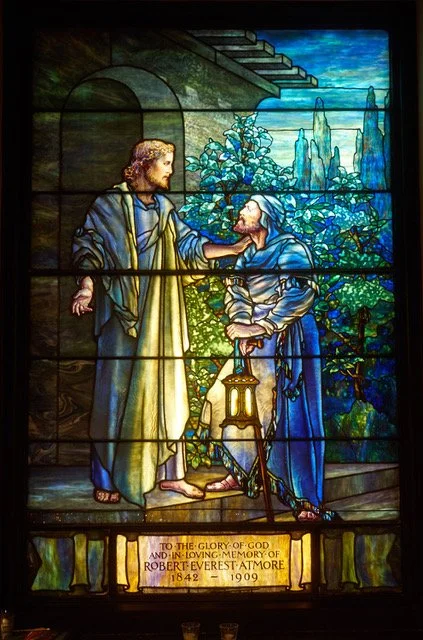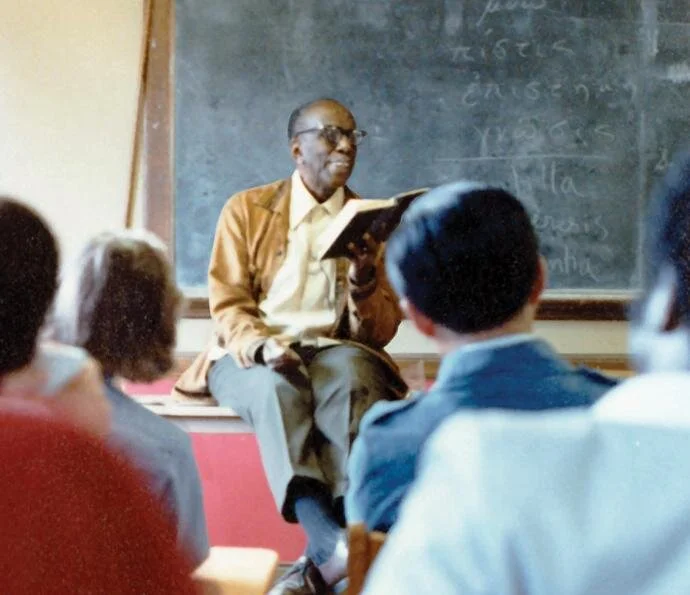Friday Reflection Part II: Profiles in Compassion–The Old St. Stephen’s Club for Newsboys 1919-20
The Old St. Stephen’s Club for Newsboys. In The Church News, March 1920; courtesy of philadelphiastudies.org
As Philadelphia emerged from the 1918 influenza pandemic and World War I, St. Stephen’s launched a neighborhood outreach project whose motto emphatically asserted an attitude: “Somebody Does Care.” The project converted the church’s club for enlisted men, who flowed through Philadelphia to and from Europe until war’s end in 1919, into a club for the city’s “little merchants of the street,” according to The Church News of March 1920. These were the working urban youths—newsboys, bootblacks, peddlers—who filled the city with their shrill “hawking” intended to reach clients through the incessant cacophony. Ethnically and racially diverse, often born to recent immigrants, many were orphans, homeless, runaways, or victims of impoverished, abusive, or dysfunctional homes.
The expressed “care” that drove this new club, renamed the Old St. Stephen’s Club for Newsboys, is important because the attitude was reciprocal. It conveyed the church’s compassion for the needy boys and, in turn, it reflected the boys’ own hopes. According to The Church News article, they gathered at the club entrance to wistfully observe the transient military relax in ways they wished for themselves. They weren’t soliciting; they were silently telegraphing hunger for something better to a community that noticed, acknowledged, empathized—and responded.
The Club’s given aim conveyed belief in the boys, distress at their plight, and a negative moral judgment of the modern city. The place was to be “a haven from the temptations of the heart of the great city; a place of stepping aside from the things that tend to make bad boys, evil companions shunned, and a start made toward a useful life. . . . “ Unlike St. Stephen’s Farm (an escape), the Club was to be a refuge within the city, with resources to confront urban problems. It was also, significantly in these years, to be as open to all, regardless of race or creed, as in the boys’ street life.
Managed by an assistant rector and volunteers, and funded by contributions, the club offered a motherly hostess; food (no alcohol or tobacco); safe entertainment (no gambling); opportunities to make music; practical advice on managing life (including finances); counseling and mediation for runaways and their families—all for a modest age-adjusted fee. There is no mention of prayers or religious counseling or services. There were 180 Club members when the Church News article was written.
The results, claims the article, mark “another chapter of the great work our Church is doing: . . . happy faces . . . boys made anew through the medium of love and good, sound advice . . . on the threshold of manhood . . . looking forward and upward to lives of happiness and usefulness.” The photographs (above) intended to punctuate the improvements.
How long did the Club last? The building (a cluster unified in 1867) burned in 1922 and was replaced in 1925 with architect Wetherill P. Trout’s versatile structure (now used by Lantern Theater) with facilities, like a basketball court in the basement, that could serve various contingencies.
What happened to these boys?
Though the Church News article doesn’t say so, by 1920 the little merchants of the street belonged to a dying breed with a long history in the modern American city. The very description is reportedly American, dating from the 1860s, for a street community that had burgeoned since the 1830s and appealed to a public imagination filled with the street urchins of Charles Dickens (notably Oliver Twist, 1830s) and Victor Hugo (Les Misérables, 1862). As social problems developed in tandem with American cities, this subculture of marginalized enterprising youths quickly sparked social welfare projects—faith-based and private—that prefigured St. Stephen’s version.
I say a dying breed because by 1910, public agencies focused increasingly on child labor and welfare, improving conditions and reducing the number of homeless and runaways. Compulsory education kept them off the streets. The Depression replaced them with unemployed adult males. Newspapers that once depended on newsboys to sell afternoon and evening editions permanently restructured their distribution systems.
That history makes the Old St. Stephen’s Club for Newsboys all the more distinctive. Though hardly innovative and directed to a vanishing community, it engaged a population that still existed and, despite reforms, was still needy and hoping for better. This is a telling example of the work of the Gospel in modern transitional times.
Yet new problems loomed ahead. Over the next decades, in the place of the little merchants came, first, the runners during Prohibition and for organized crime. Rather than homeless, some were working their way up in the family business. After World War II, with massive migration to US cities, we then see the emergence of youth gangs, this time coalescing along racial, ethnic, and national lines, adding to urban violence and crime to the present day.
Now, just here in Philadelphia, city departments, faith groups, the Episcopal Diocese of Pennsylvania, and Episcopal Community Services work with youth as an integral part of the crime, homelessness, addiction, and poverty that plague us today.
As I ponder these painful problems in our own world, I think of the Newsboys’ Club motto, “Somebody Does Care,” to seek new ways to open to the compassion that defines sainthood for many. Were the Newsboys’ Club workers modern saints? This compassionate group living the Gospel at St. Stephen’s certainly sets an admirable model today.
—Suzanne Glover Lindsay, St. Stephen’s historian and curator
About Friday Reflections:
Every Friday, Father Peter and Suzanne Glover Lindsay share written reflections highlighting a particular theme. This week's Friday Reflection explores Profiles in Compassion. Check out Friday Reflection Part I, where Father Peter considers Saint Catherine of Siena.









